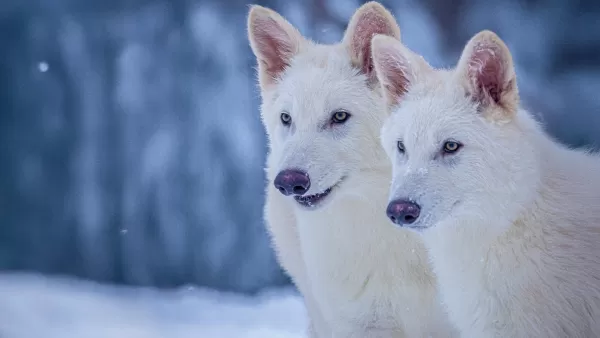Resurrecting a prehistoric canine that vanished 12,500 years ago sounds like the opening scene of a Hollywood horror flick, complete with gnashing teeth and gory special effects. Yet against all odds, a trio of genetically engineered dire wolves now prowls a secure compound somewhere in the United States.

The minds behind this radical scientific endeavor belong to Colossal Biosciences. The biotech firm employed cutting-edge genetic wizardry - combining ancient DNA samples with modern gene editing and canine surrogates - to birth the wolf siblings Romulus, Remus, and their fierce little sister Khaleesi. These genetically enhanced canines embody every fantasy of a mythical beast - massive snow-white frames radiating primal majesty.
"This landmark achievement demonstrates the viability of our comprehensive de-extinction pipeline," declared Colossal CEO Ben Lamm with visible pride. "By reconstructing genetic blueprints from a 13,000-year-old tooth and 72,000-year-old skull, we've successfully revived what was lost to time. Arthur C. Clarke famously observed that advanced technology appears magical - today we're unveiling our modern alchemy with profound implications for ecological preservation."

Colossal Biosciences is no stranger to controversy. Their previous "woolly mouse" experiment - essentially a fuzzy rodent mimicking mammoth traits - drew skepticism from traditional geneticists. Critics argue these reconstructed dire wolves represent genetic cosplay rather than true resurrection, since existing samples lack the complete original DNA required for perfect replication.
Beyond viral headlines, Colossal's work carries deeper significance. Scientific advisor Dr. Christopher Mason explains: "Our dire wolf breakthrough pioneers revolutionary conservation techniques. These same genetic tools could safeguard endangered species worldwide, marking a quantum leap in biotechnical stewardship of Earth's biodiversity."
The dire wolf pack enjoys extensive safeguards, having passed rigorous evaluations by the American Humane Society and USDA. Occupying a sprawling 2,000-acre sanctuary, the genetically engineered canids receive round-the-clock care from a dedicated team of specialists - living proof that humanity's scientific ambitions now rival nature's ancient designs.















